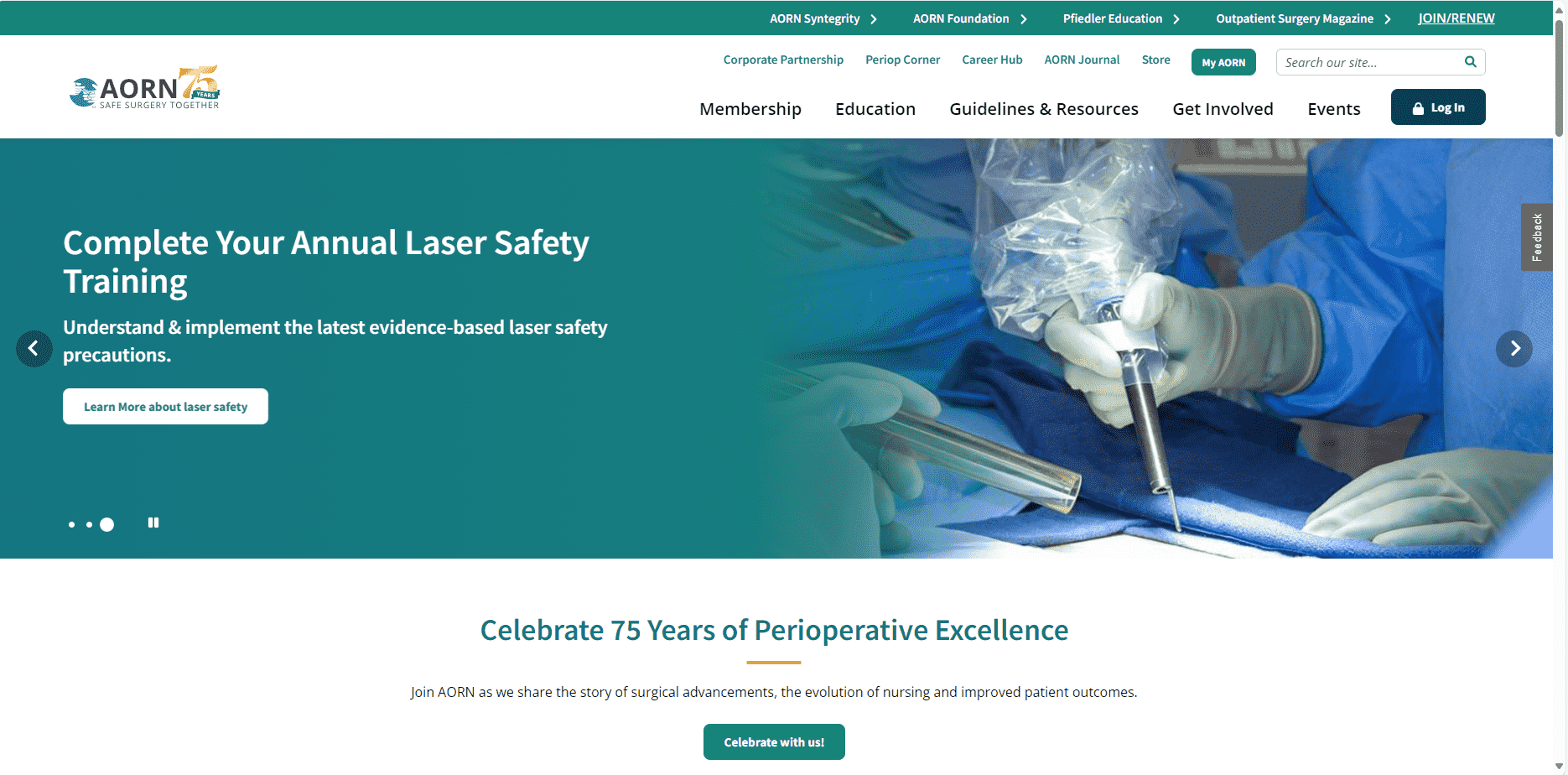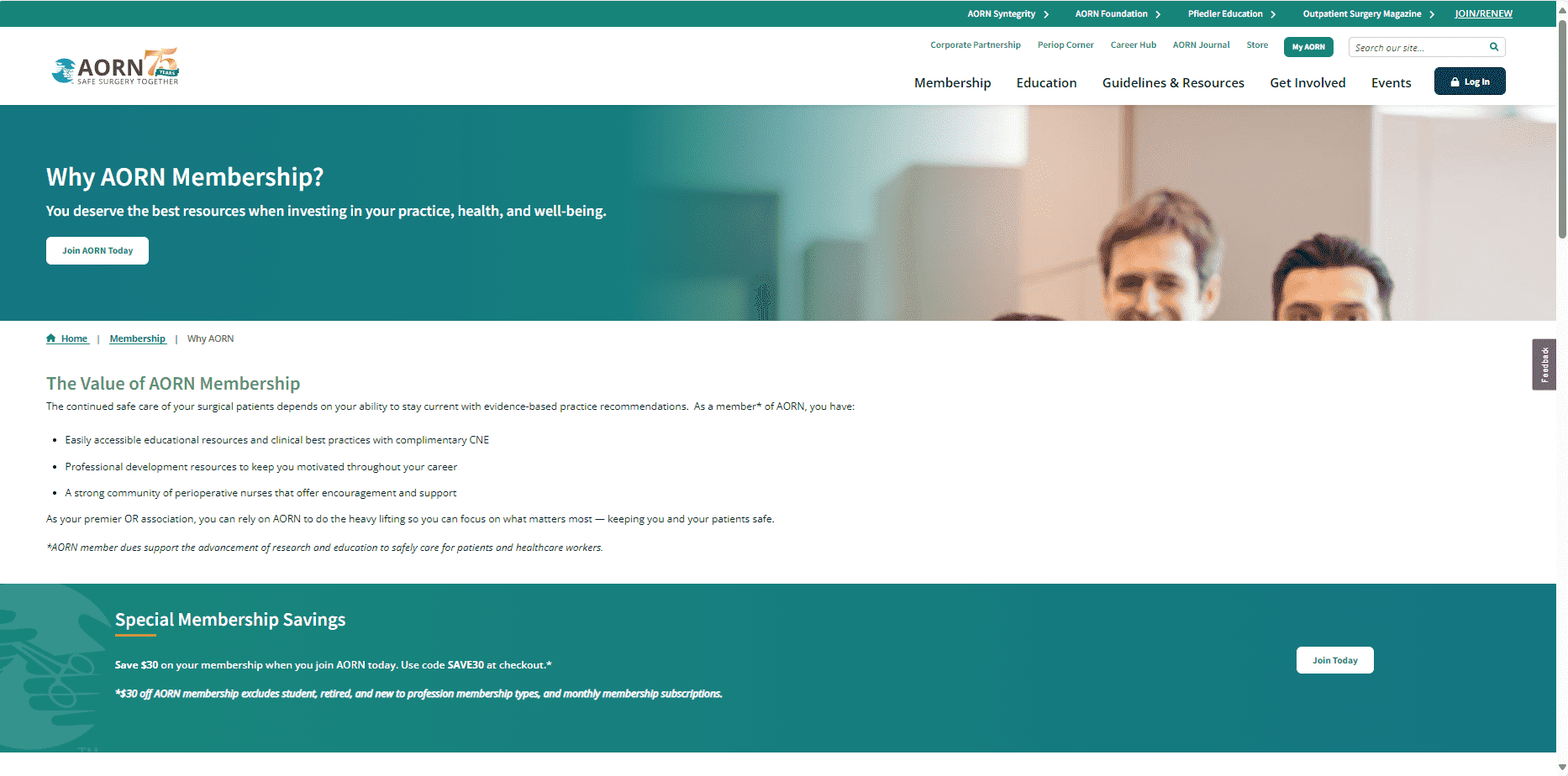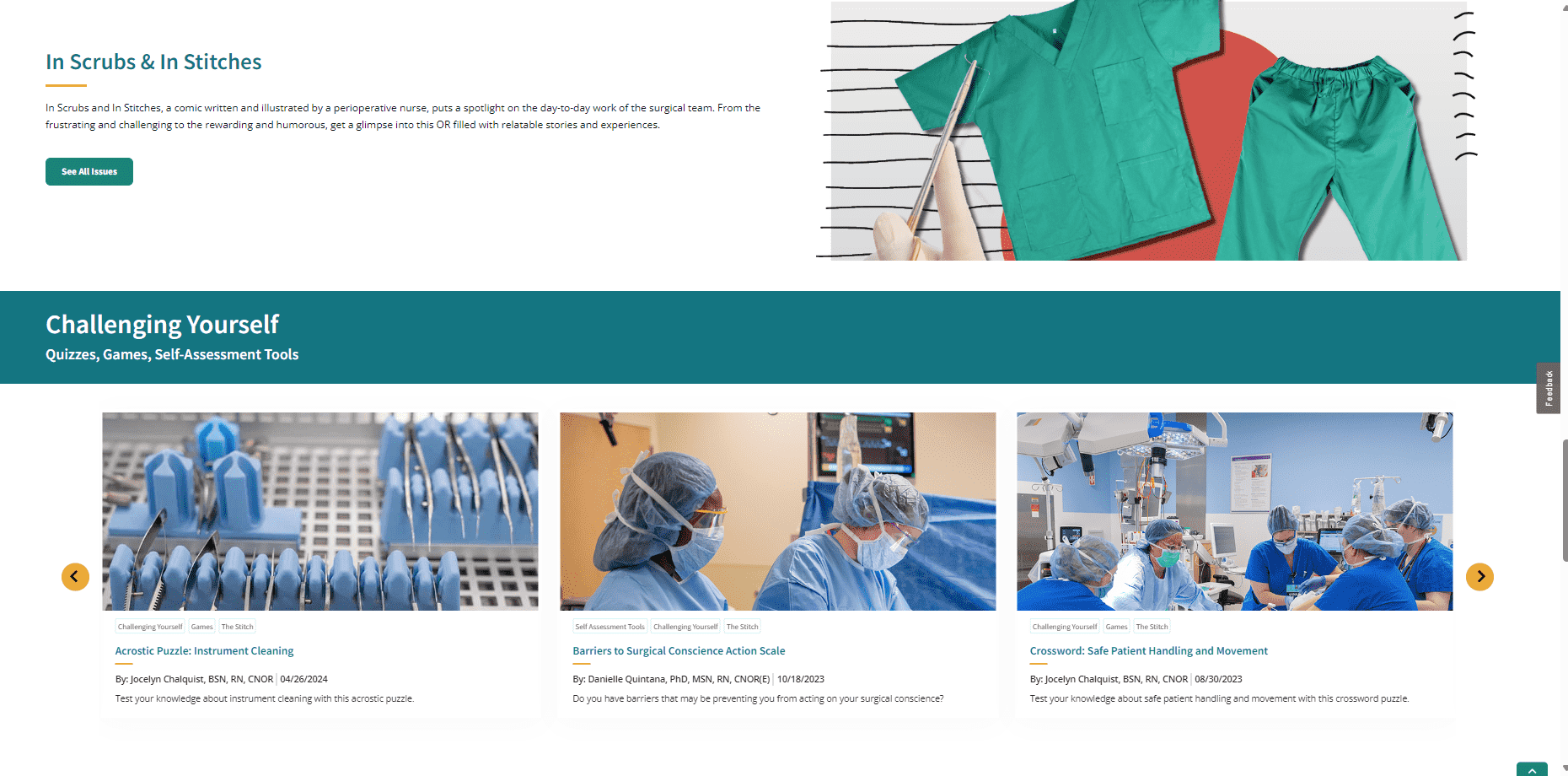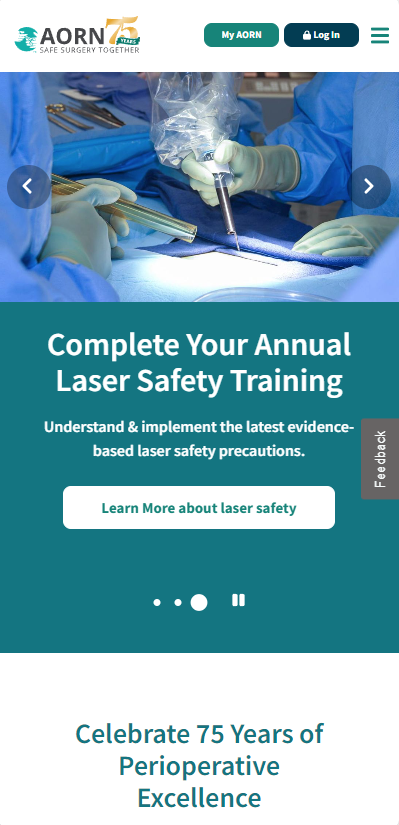AORN
Services we provide:
- Digital strategy
- Website data tracking & analysis
- Website design & development
- Progress Sitefinity implementation
About AORN
AORN is the Association of periOperative Registered Nurses, a community that started in 1949 in order to share best practices for operating room nurses. AORN is celebrating 75 years of being the largest family of organizations dedicated to supporting nurses and surgical teams with over 44,000 members nationwide. AORN shares information with its members through their digital assets, including the website. AORN came to the experts at SilverTech wanting a new digital member experience across all the AORN websites.
The Process
SilverTech’s strategy team reviewed the most current data from AORN and provided recommendations for enhancing components of all the websites for optimized data accuracy and clean data collection going forward. With this project, SilverTech met the challenge of moving seven websites from Sitecore to Sitefinity. Progress Sitefinity was the newly chosen platform for its ease of use, rich functionality and fully customizable features. This project required a design of seven unique styles and brands, creating widgets and content types that would accommodate their content needs for each of the seven entities. This includes the Outpatient Surgery magazine which had more than 12,000 articles. Other challenges with this project included the incorporation of ad space throughout the sites, SSO and member login functionality, custom search, scripted content migration and more.
RESULTS
Why a ‘Lift and Shift’ Web Replatform is Not Usually a Good Idea
By: Erin Presseau | 6/27/23
I’ll start this by defining what a ‘Lift and Shift’ is because it can be called several other names as well. Basically, a ‘lift and shift’ web replatform is when someone wants to change their website content management solution (CMS) but doesn’t want to redesign the site or overhaul the content. There are many reasons that an organization may want to change web platform providers. It is possible that the company has outgrown its existing technology, upgrades or licensing fees have become too expensive, or perhaps the CMS vendor hasn’t kept up-to-date with changing digital experience or integration needs that are required to remain competitive.
Most organizations upgrade existing platforms or change web platform vendors every five to eight years. So, I’m not saying a web replatform isn’t a good idea – it often is a great idea. What I am saying is not a good idea is to assume that you can migrate your website ‘as-is’ from one platform to another. Not only is this nearly impossible from a technical standpoint, but it’s also not usually a smart move from an organizational standpoint either. Here are five reasons why a ‘Lift and Shift’ website migration from one platform to another is not a good idea.
1. Content is modular and most CMS modules do not operate exactly the same way. At the very least, content should be modular in any mid-market or enterprise modern CMS. The reason you want content to be modular is so it can be shared across other sections of the website, or even other digital devices in the case of a headless CMS, while being maintained in only one area globally. This saves time, eliminates human error, and is quicker to approve and deploy. For example, if you have Frequently Asked Questions on your website today as just regular page content and the new CMS you are migrating to supports modular content – you’d want your FAQs to be migrated into modules so that you can gain the benefit of sharing that content to other relevant pages. In this case, even though it’s the same content we are using, it would need to be deployed by your agency in a different format. This would mean it no longer fits the definition of a ’lift and shift’.
2. Some old content needs to be removed, updated or archived. Before you replatform, you will want to do a careful review of your site’s existing content. Ask your agency to do an in-depth content audit or review to find out what content is outdated so that you don’t migrate old content into your brand-new site. Specifically, take a look at old news releases, blog posts and articles to see if they are still valuable to the end user. If they are, consider at least refreshing the content in order to optimize for SEO. Migrating old content can be time-consuming (read costly) and could be a detriment to your users or to your search rankings.
3. Compliance. In addition to search engine guidelines that are constantly changing, you also have to consider new data privacy laws, American Disabilities Act (ADA) Web Accessibility laws and other industry compliance regulations your company may have to follow. If you haven’t updated your web platform in years, it’s very likely compliance laws have changed since your existing site was launched. In order to meet compliance, you likely will have to update code, images or other items on your site – which will mean it would no longer be a true ‘lift and shift’.
4. Sitemap and functional updates made during migration are often less expensive than those added later. We often hear that a prospect is requesting a ‘lift and shift’ because they’ve run out of time with their current vendor (maybe it is time to renew licensing fees or they’ve got an internal mandate to have the site replatformed now). They don’t have time to audit or review the site content for updates and thus just want to redeploy what they have. The problem with that is most sites that require reorganization of pages or updates to functionality will be the least costly during initial development. So any changes post-launch are likely to be more expensive. We like to recommend to our clients to, at the very least, talk through a digital roadmap with your development team so that they keep those future updates in mind as they develop your site on the new platform.
5. A ‘lift and shift’ is not usually quicker to launch. The primary reason for this is that as soon as you get into the project, you’ll realize that a ‘lift and shift’ isn’t what you really want or need. It never fails that a client gets a quarter of the way into a web project and wants to change something – whether it be the sitemap, layout or functionality of the site. And, that is really a good thing. Your site is too valuable to the growth of your organization and to retaining your customers. Don’t rush it or minimize the great opportunity you have to modernize and update your website during a website replatform.
Again, please don’t take this as a suggestion not to replatform to a new CMS. It might be exactly what your organization needs in order to improve customer experiences, integrate with existing systems and data to support personalization, and provide full journey tracking to prove ROI. Although it may take time, the research and planning to make strategic enhancements to your website will pay off in the end.




